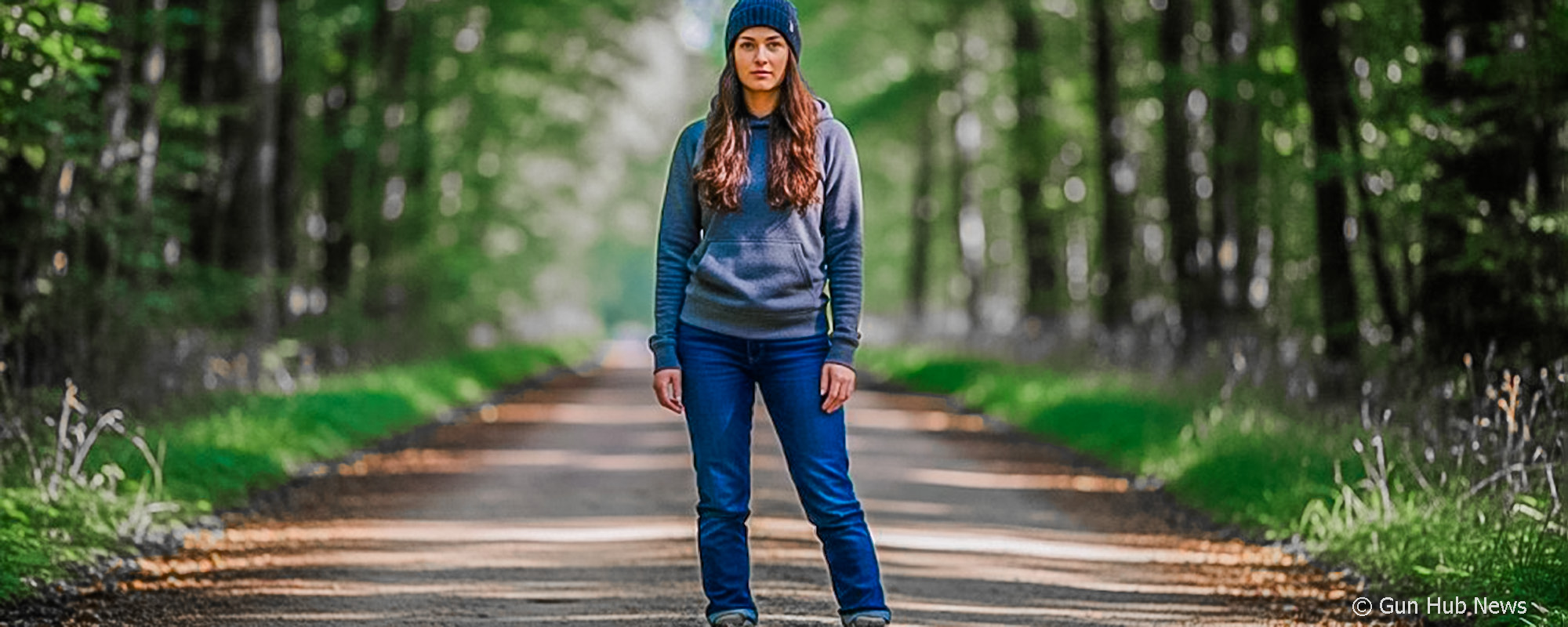When you carry a concealed weapon every day, you start to see challenges you might not have considered before. One of the biggest? The arrival of cold weather. There’s a subtle trap that many of us who carry fall into: the comfort of feeling safe. Having that tool on your hip makes you feel more prepared, more capable. But there’s a world of difference between feeling ready and being ready. Your winter wardrobe could be the one thing that stands between you and effective self-defense during winter carry.
As a law enforcement officer, I spend a fair amount of time out in the elements. I can tell you from experience that just getting to my keys or wallet when I’m layered up is a chore. Now, imagine trying to get to a concealed handgun under those same layers. It’s not as simple as just pulling up a t-shirt.
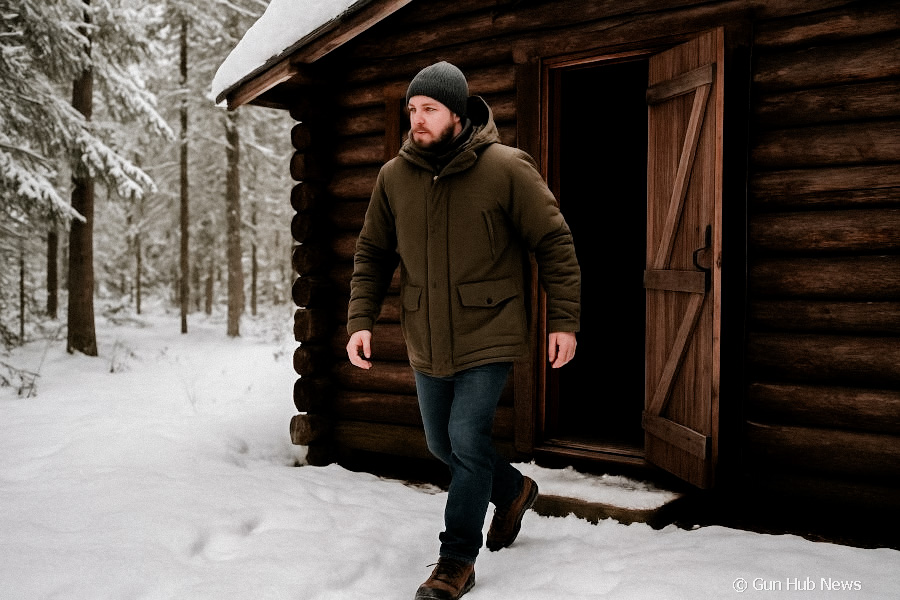
So, what’s the answer? Freezing for the sake of a quick draw? Not at all. It’s about being smarter with our gear choices and, more importantly, our training. You don’t have to build your entire closet around your firearm, but a little tactical consideration goes a long way. Here are some of the key things to think about.
Where does your gun go when you’re bundled up?
For most of the year, my IWB (Inside-the-Waistband) holster is a perfect option for conceal carry. It keeps my firearm snug and hidden.
But, if you have tried to draw from a conceal carry holster with a ton of clothing and heavy coat, you know it’s not so easy. All those layers make it hard to just “pull” your clothing out of the way to draw your gun.
This doesn’t mean you have to ditch your favorite holster. But you do have options.
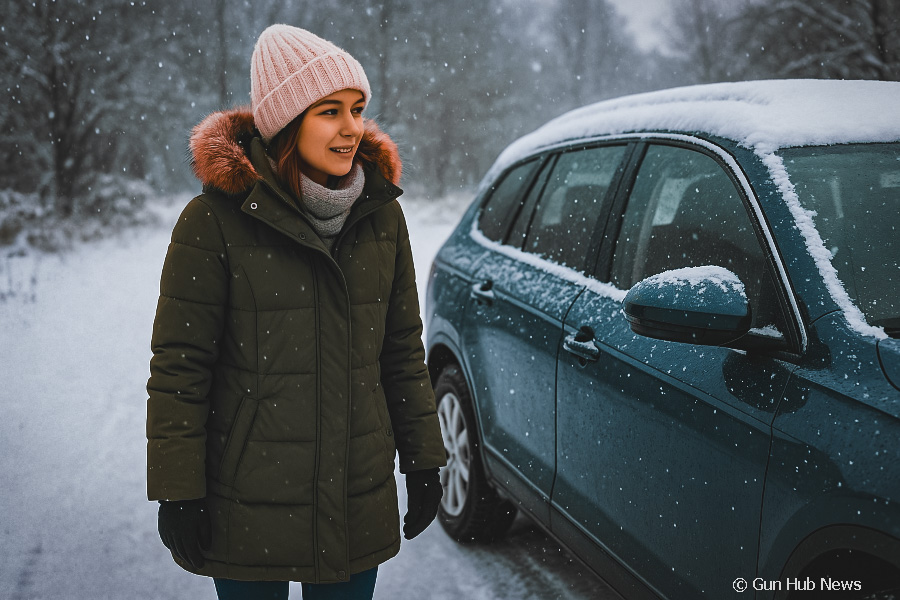
First, and most importantly, practice with what you wear. Put on your winter coat and run through your draw. I found that a one-handed draw, where you use your thumb to lift your shirt, isn’t the best way to draw. It’s good to practice this in case you can’t use your other hand, but, when possible, use your support hand to pull the clothing out of the way.
This is the most reliable method for summer and winter carry. But even with this method, a couple of layers of clothing plus a coat make it hard.
Because of this, I like to switch to an OWB (Outside-the-Waistband) holster for the winter months. This keeps your firearm outside of your base layers, meaning only your coat is in the way.
If you keep your coat unzipped, access is immediate. Even if it’s zipped, pulling up a single, heavy garment is much easier than fighting through multiple layers tucked into your pants.
Is “gun gear” a necessary investment for winter carry?
Ok, so you don’t have to buy special clothing or gear just to carry a gun. But I’ll be honest, sometimes, it makes life a lot easier. Since I carry everywhere I go, I’ve found that a few key purchases have been worth it for comfort and accessibility.
A shoulder holster is a classic winter solution for a reason. It’s worn over your regular clothes and under your coat, making it easy to reach across your body. You’ll need to practice drawing from it, especially if you keep your coat zipped, but it’s a great option.
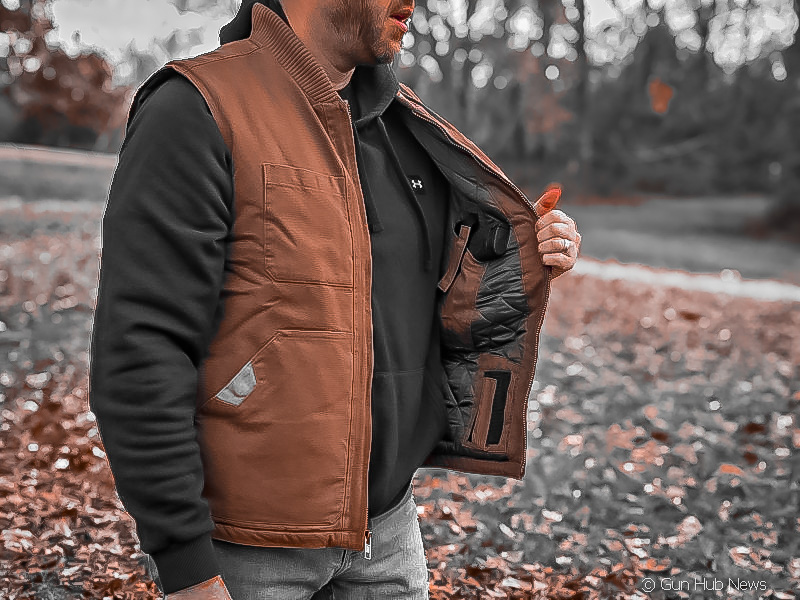
This past Christmas, my wife got me a vest with a built-in holster. It has become my go-to piece of winter carry gear. It keeps my firearm right at my chest, and I don’t have to worry about pulling up any layers from my waist. It’s comfortable, practical, and fast.
Whatever you choose, the golden rule is to train with it. Dry-fire practice at home costs nothing but time and it builds the muscle memory you’ll rely on if you ever face a threat.
What about your hands? The glove dilemma
We’ve talked about coats and layers, but don’t forget your gloves! This small detail can cause a huge problem. If you live in a place with serious cold weather, you’re probably wearing thick, insulated gloves. Trying to get a firm grip and find the trigger guard of a handgun with those on is a recipe for disaster.
If you need those bulky gloves for warmth, you absolutely must practice taking one off as part of your draw. Drill it until yanking off your dominant hand’s glove while reaching for your firearm is a single, fluid motion.
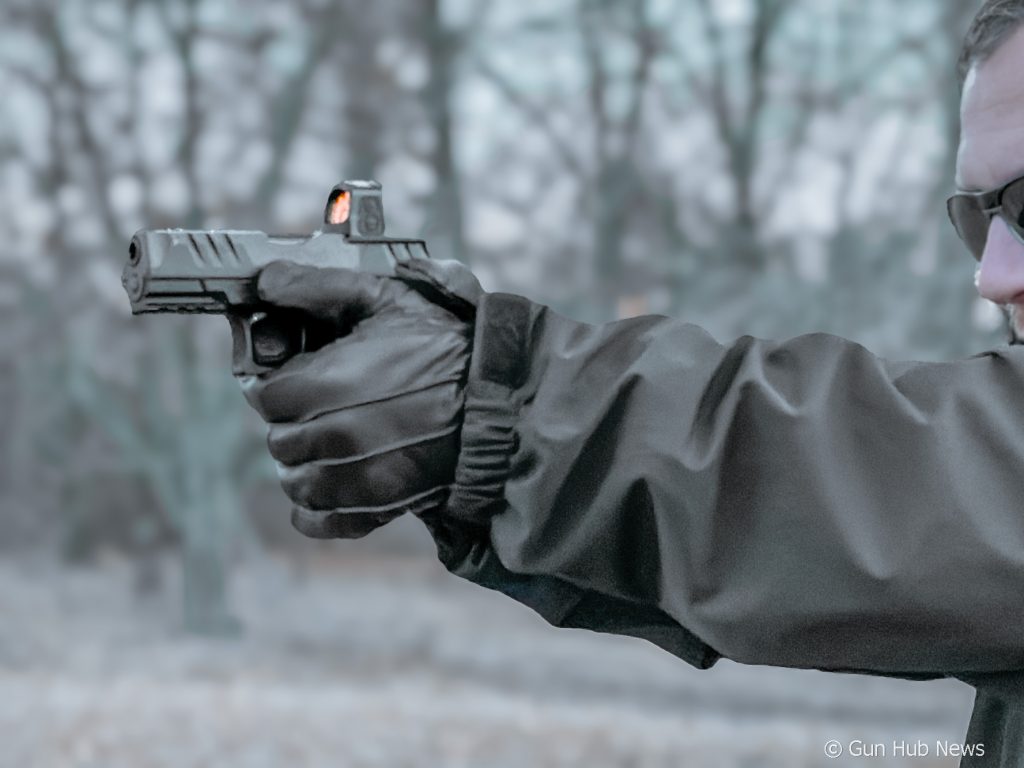
For less extreme cold, consider investing in a good pair of shooting gloves. Brands like Hatch, Magpul and Mechanix make excellent gloves that are thin enough for you to feel and operate your firearm but still offer a barrier against the cold. Find what works for your climate and your gear.
One pair I use a great deal in extremely cold weather is the Hatch Winter Patrol Gloves. They are warm, easy to take off, and also just thin enough I can still fire a full-size handgun with them on.
Train for winter carry
That feeling of safety a gun gives you can be misleading. The same can be said for training. Going to the range once in a while and having a good day is great, but it’s not enough. Firearms skills are like muscles; as the old saying goes, “if you don’t use it, you lose it.”
Consistent training is what forges true readiness. It builds the pathways in your brain so that your body knows what to do without conscious thought. You don’t need a special wardrobe, but you do need to think about what you’re wearing and how it impacts your ability to defend yourself. Stay warm, stay smart, and stay practiced with your winter carry.

